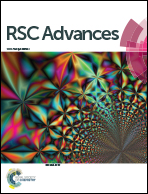Microencapsulation of lime (Citrus aurantifolia) oil for antibacterial finishing of cotton fabric
Abstract
Functional cotton fabric incorporated with antibacterial microcapsules of lime (C. aurantifolia) essential oil (LO) was prepared. The coacervation method, employing two biopolymers of alginate and gelatin as the shells, was preferentially selected to produce the LO microcapsules, whereas immobilization of the LO microcapsules onto the fabric was done using the pad–dry–cure method using various concentrations of citric acid binder. The antibacterial inhibition zone of the functional fabric was subsequently analysed using the Kirby Bauer method. The LO microcapsules were produced with a yield, encapsulation efficiency (EE), and oil content (OC) of 47 ± 4%, 84 ± 11%, and 58 ± 4%, respectively. The homogenous spherical and soft microcapsules (1.554 μm) bonded effectively by 4% citric acid onto the surface of the fabric and detached back by only 3% after 15 cycles of washing. Overall, the optimized functional fabric exhibited the highest antibacterial activities among others against typical skin bacteria, such as S. aureus, E. coli, K. pneumoniae, and S. epidermidis, and thus it can be potentially applied to obtain antibacterial functional textile.



 Please wait while we load your content...
Please wait while we load your content...